The ancients saw volcanoes as the wrath of their mighty gods. Volcanoes have been blamed for clearing whole towns, even planet-wide extinctions. A local team based in Gozo has just found out if Etna affects the Maltese Islands. Words by Dr Edward Duca.
 In the year 1329, a Sicilian exile saw a blackish cloud coming from the north. Fine dust swept over his fields and the whole island. A few days later news arrived with a merchant vessel. Monks from Sicily recounted how the largest active volcano in the Mediterranean, Etna, had spewed hell and erupted from its eastern flank.
In the year 1329, a Sicilian exile saw a blackish cloud coming from the north. Fine dust swept over his fields and the whole island. A few days later news arrived with a merchant vessel. Monks from Sicily recounted how the largest active volcano in the Mediterranean, Etna, had spewed hell and erupted from its eastern flank.
The details are imagined but the date is not. Since 1329 Etna’s volcanic plumes have been known to reach Malta. Ash arrived again in 1694, 1787, three times in the 19th century, and even as recently as 2013, with irregular covering this year. Unfortunately, we do not know what damage it does to our Islands, if any. Volcanic ash can stop aircraft in mid-flight, damage infrastructure, contaminate crops and water, and harm humans and animals.
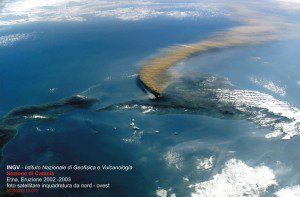
Etna is a decade volcano. These are a set of 16 volcanoes from around the world chosen for special monitoring because of their ferocity, destructiveness, and proximity to populated areas. Etna is around 200 km away from the Maltese Islands. Ash plumes can travel much further. Despite these facts, most Maltese are unaware of Etna’s potential effect on Malta.
“most Maltese are unaware of Etna’s potential effect on Malta”
Etna’s effect on Malta has never been seriously studied. To change this Prof. Raymond Ellul, Ing. Francelle Azzopardi and a team of Italian volcanologists adapted a computer model called PUFF to see what happens when the volcano becomes over active.
PUFF was developed to study the Redoubt Volcano after it shot volcanic ash 14 kilometres high in 1989 and caused damages worth $160 million. PUFF can forecast how volcanic eruption plumes will spread, how dense they will be, and how much ash they will deposit. To get an idea how Etna would affect Malta, the team input local weather data into the model and ran it on three different eruption scenarios.
Volcanoes can erupt in many different ways. They discharge either through build up of hot gases, superheated steam, or contact between hot magma and cool water. The researchers chose to model three recent eruptions of Etna, which were the most relevant for Malta. The first is from 2001 and 2002 when Etna erupted with a violent strombolian eruption (due to gas build up) that shot up ash 5 km high. The second happened in 1998 and was much more violent but short lived, a sub-plinian (also due to gas pressures) eruption formed a 12 km column. Sub-plinians are among the strongest eruption types, named after the description of Pliny the Younger who witnessed the death of his father when Mount Vesuvius erupted in 79AD burying Pompeii. Lava fountains are the third eruption type they modelled. In 2011 and 2012, 25 lava fountains occurred — some formed ash columns 9 km high.
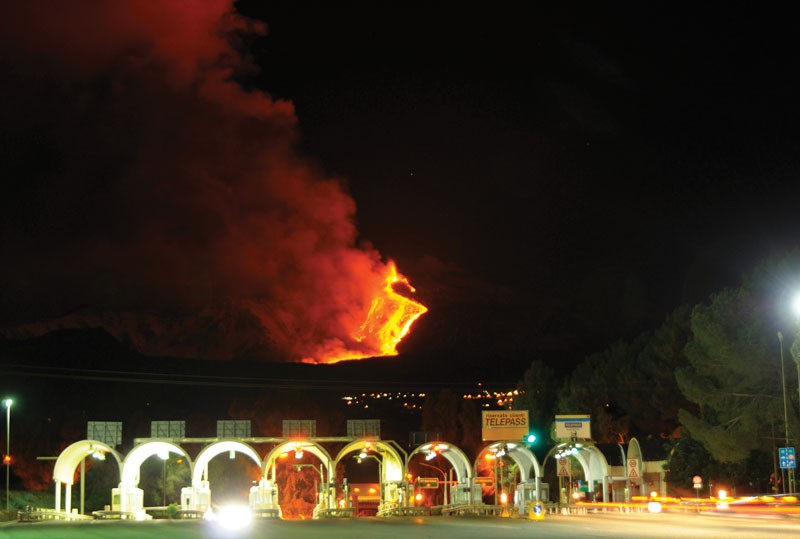
‘Over a period of two years we ran a simulation [of each eruption type] at midday and midnight and we saw whether it [the plume] affected Malta or not. We drew a circle around Malta and if the plume went over this circle then [we noted] that Malta was affected,’ said Azzopardi. On the whole they predicted that Etna’s eruptions covered Malta with ash 13% of the time. They compared this value to the 25 lava fountains that happened a few years ago. The lava fountain ash plumes passed over Malta 16% of the time — remarkably accurate, proving the model powerful.

The reason for the low frequency of Etna’s ash reaching Malta depends on wind speed and direction rather than the eruption type. For ash to reach Malta it needs a strong wind from the north-northeast. Most of Malta’s wind comes from the northwest.
Eruption type influences the time it takes for ash to reach Malta. The more explosive sub-plinian eruptions reach Gozo within four hours, but do not cover the Islands for very long because of the eruption’s short duration. The weaker strombolian eruptions take the longest at 6 hours to reach Gozo but cover Malta for the longest time, which might make them the most problematic.
‘In 2001 and 2002 there was a warning for people who suffer from respiratory problems,’ said Azzopardi. This warning is really as bad as it gets for Malta. ‘Till now Etna has not done any damage to vegetation or animals.’ Their model predicted ash deposition of 0.1 g/m2–0.01 g/m2, while damage threshold is set at 10 kg/m2 for vegetation. There is no reason to sound any alarms.
“Till now Etna has not done any damage to vegetation or animals”
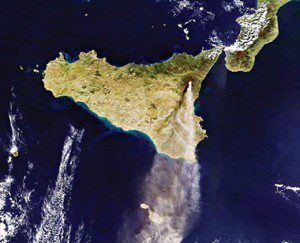
While humans are safe at these levels, planes are a different issue. ‘[Ash] mostly affects airplanes when they are flying,’ explained Azzopardi. ‘The damage: it forms a glassy surface on all the nozzles and the combustion chamber switching the engine off. One 747 engine costs 20 million US dollars, the airbus engines we have cost less but are not that cheap,’ interjected Ellul. In 1989, KLM Flight 867 passed straight through an ash plume killing its four engines. Remarkably, no one died as it plummeted more than 14,000 feet since its pilots managed to restart the engines in time to land safely. It cost the company $80 million.
The threshold ash levels which planes can fly through are unknown. The potential expense and loss of life if an airplane shuts down mid-flight is grim. The researchers’ primary goal was to extend the forecasting model of the Osservatorio Etneo in Catania from 28,900 km2 to 99,000 km2. The increase widens the model from just northeast Sicily to include all of Sicily and Malta to protect local aviation flight paths.
The Italians now model the new larger area to give early warning systems to airplanes. Unfortunately, a rigorous procedure isn’t in place and the Italian team do not alert the Maltese metrological office directly. Malta’s Met. office needs to find out from the web-based model.
The lack of flight levels is another problem of the model. ‘On the 19th April 2013 we [Air Malta] had a very close shave where the aerosols passed over Malta and fell over Żejtun. An Air Malta craft saw this plume and they contacted us to see if there was the possibility of damage,’ explained Ellul. Thankfully, the ash plume was mostly water and contained levels of ash that left the plane unharmed. The local team would like to work on and solve these problems.

The Maltese public are strangely unaware of what Etna is capable of. Using an online questionnaire, Azzopardi collected data from 442 University of Malta students to try and figure out what the Maltese public knew about volcanoes. Although 69% said that Malta is affected by Etna, ‘they themselves admitted that they had never thought about this topic and were answering on the basis of the proximity of Sicily and Malta,’ said Azzopardi. Many of these thought that Etna affects human health, water, plants, and animals — it doesn’t.
Azzopardi continued, ‘In 2001–2002, [Etna’s] coverage was much greater and affected both Islands.’ She then explained how the ‘black soot’ was misinterpreted as pollution from the Marsa ‘power station, hospital, or even a passing plane that dropped something’. The conspiracy theories were endless. Volcanologists need to launch a strong campaign to raise awareness about Etna. Somewhat ironically the survey itself ‘ended up raising awareness about Etna’.
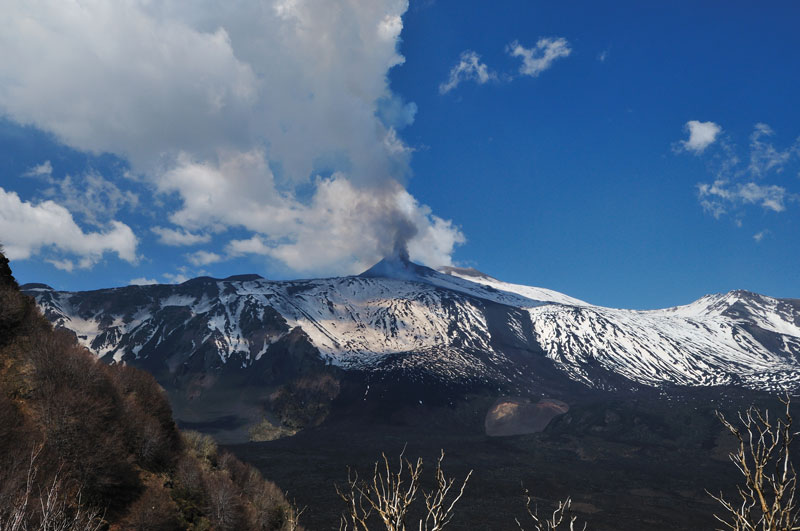
The next step
Apart from the problems mentioned above, there are some unanswered questions. Volcanoes are known to spew out lots of sulfur dioxide, nitrous gases, and other pollutants. ‘We expect sulfur dioxide to remain high up in the air, not like particulates [ash] that fall quickly,’ said Azzopardi. Modeling gases requires tweaks to PUFF. Despite this issue, she does notice some gas peak levels on their air pollution monitoring devices at the Giordan Lighthouse in Gozo. ‘If we verify this, it would be new.’
Malta’s air is pretty polluted. Traffic and other sources have resulted in Malta’s bad air quality that affects all of our health. Malta has a high percentage of respiratory problems. ‘We are analysing the extent of sulfur dioxide levels,’ explained Azzopardi. This would need to be compared with man-made sources. Then we’d know which is responsible for Malta’s problems. However, it is unlikely that Etna’s intermittent eruptions affect our health so much. After all Malta’s air is always polluted rather than only when Etna erupts.
Right now Etna seems to have calmed down after the lava fountains of 2011–2013; though Azzopardi does not ‘exclude that Etna might have other [bigger] eruptions’. Yet, ‘these [eruptions] will mostly be important for airplane traffic, some ash does land on Malta and it does cause hassle for the residents, but it mostly affects airplanes when they’re flying.’ This research has a happy ending: we’re safe, we’re sound, don’t panic.
Find out more
- Vamos Seguro project now monitoring ash plumes over Malta — http://bit.ly/VamosSeguro
- Azzopardi, F., Ellul, R., Prestifilippo, M., Scollo, S. & Coltelli, M. The effect of Etna volcanic ash clouds on the Maltese Islands. Journal of Volcanology and Geothermal Research 260, 13-26, (2013). Doi: http://dx.doi.org/10.1016/j.jvolgeores.2013.04.019
- Local group website www.um.edu.mt/science/physics/apr/staff
https://www.youtube.com/watch?v=QMpAfrGRsL0

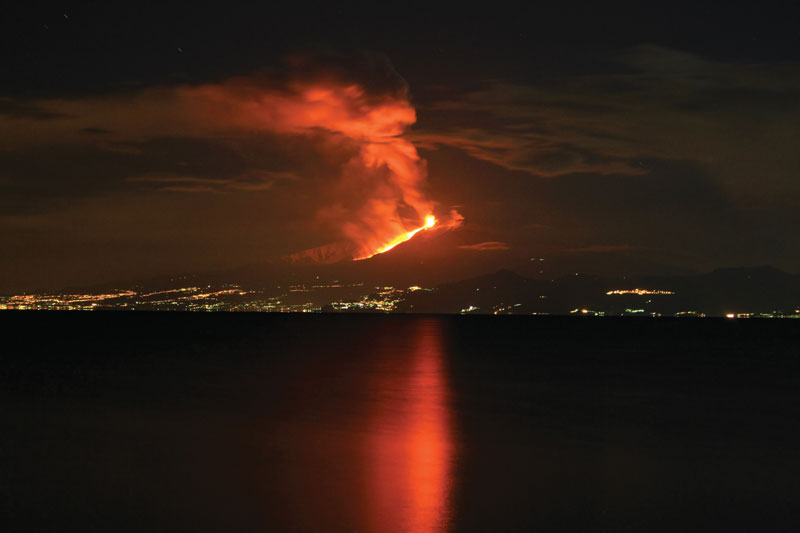



Comments are closed for this article!